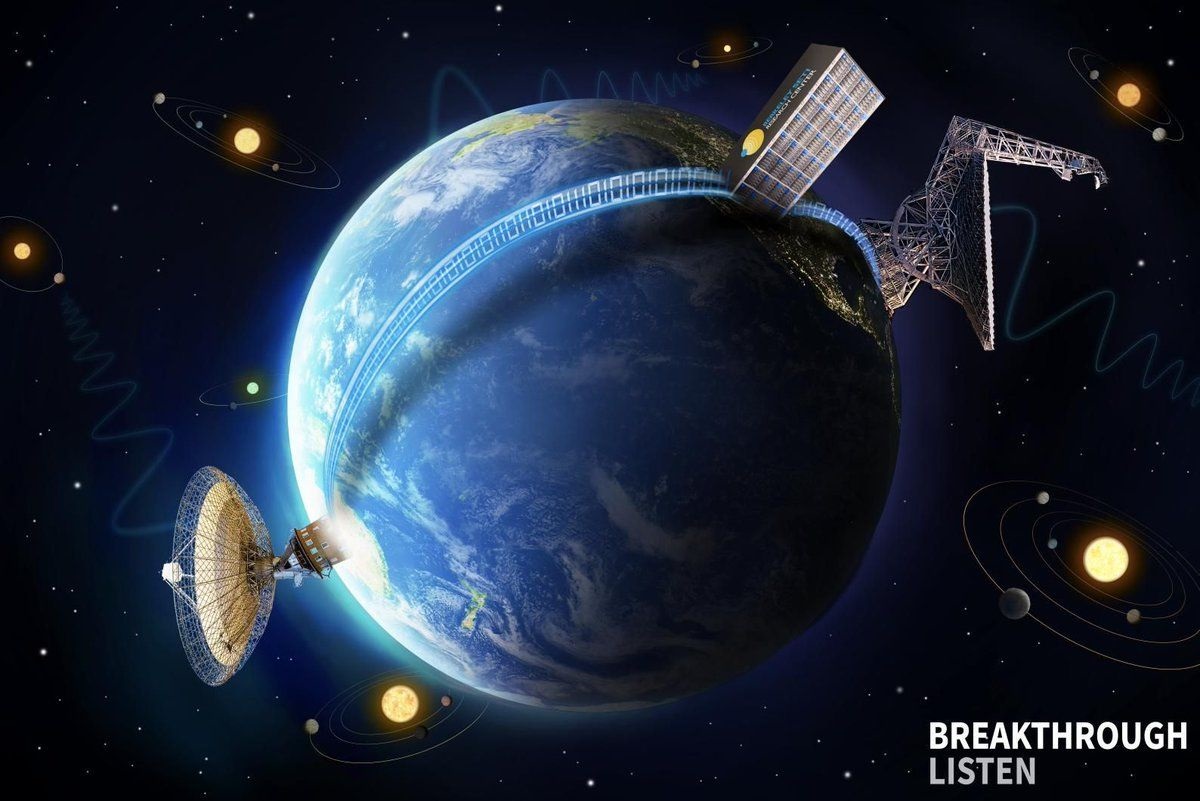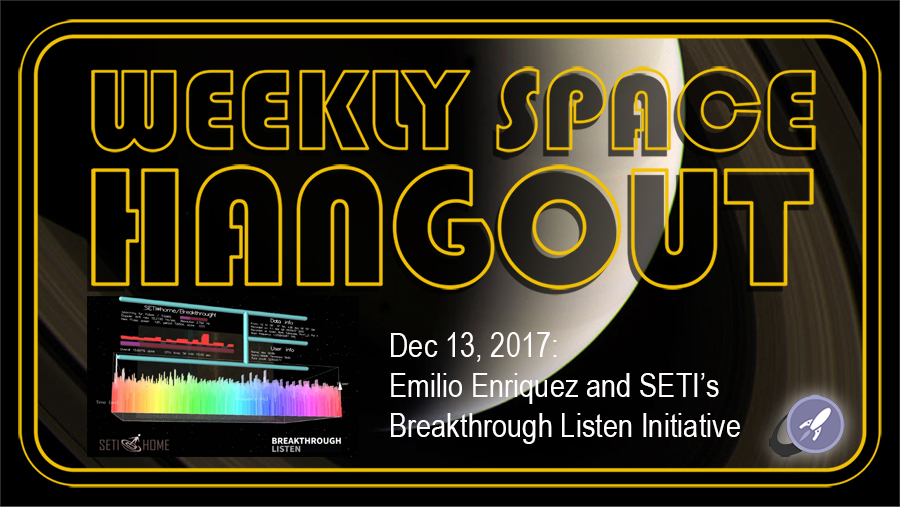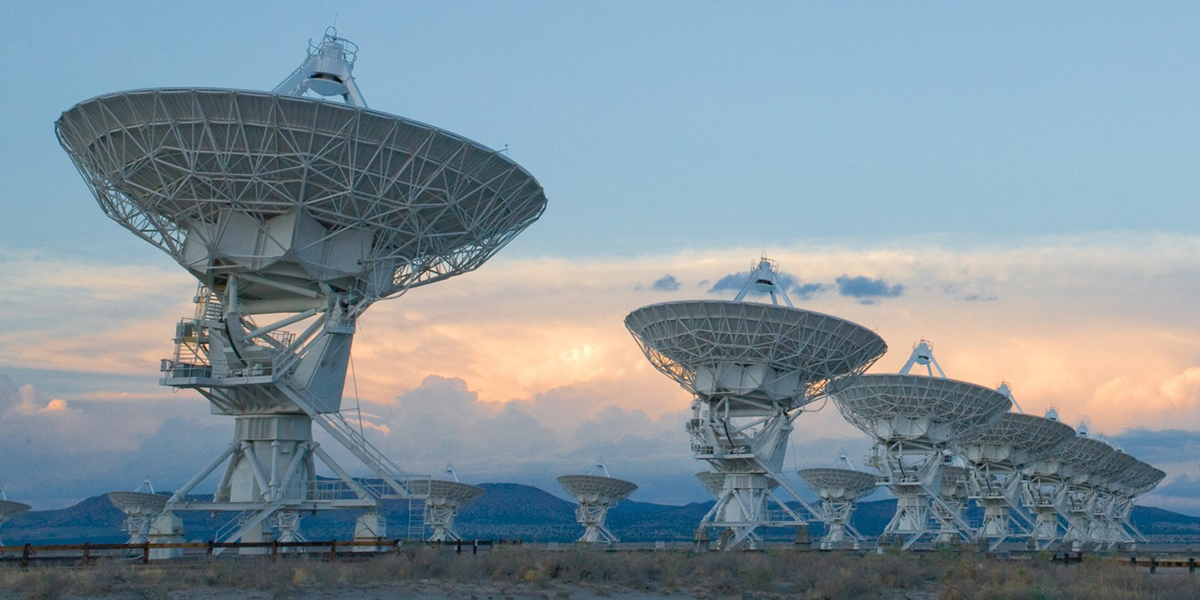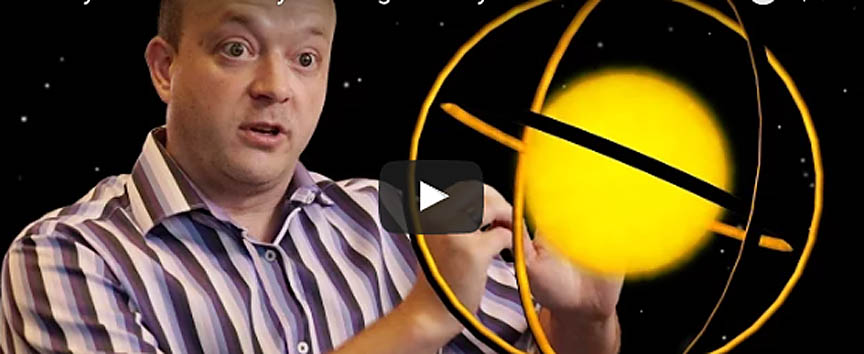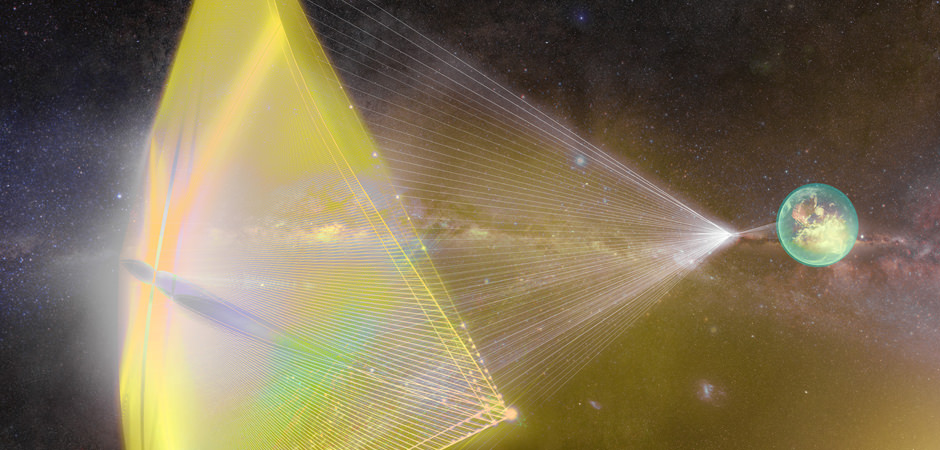This week, the non-profit research organization Breakthrough Listen announced that it was entering into a partnership with scientists from the NASA Transiting Exoplanet Survey Satellite (TESS) mission. This new collaboration will direct the resources of the former with data and expertise of the latter to the search for extra-terrestrial intelligence (SETI) like never before!
Continue reading “Breakthrough Listen and NASA Team Up to Look for Signs of Extra-Terrestrial Intelligence!”Want to Find Aliens? The Largest Dataset in the History of SETI has Been Released to the Public
In 2016, Russian-Israeli billionaire Yuri Milner launched Breakthrough Initiatives, a massive non-profit organization dedicated to the search for extra-terrestrial intelligence (SETI). A key part of their efforts to find evidence of intelligent life is Breakthrough Listen, a $100 million program that is currently conducting a survey of one million of the nearest stars and the 100 nearest galaxies.
In keeping with their commitment to making the results of their surveys available to the public, the Listen team recently submitted two papers to leading astrophysical journals. These papers describe the analysis of Listen’s first three years of radio observations which resulted in a petabyte of radio and optical data, the single largest release of SETI data in the history of the field.
Continue reading “Want to Find Aliens? The Largest Dataset in the History of SETI has Been Released to the Public”Updates on ‘Oumuamua. Maybe it’s a Comet, Actually. Oh, and no Word From Aliens.

On October 19th, 2017, the Panoramic Survey Telescope and Rapid Response System-1 (Pan-STARRS-1) in Hawaii announced the first-ever detection of an interstellar object, named 1I/2017 U1 (aka. ‘Oumuamua). After originally hypothesizing that it was a comet, observations performed by the European Southern Observatory (ESO) and other astronomers indicated that it was likely a strange-looking asteroid measuring about 400 meters (1312 ft) long.
Since that time, multiple surveys have been conducted to determine the true nature of this asteroid, which have included studies of its composition to Breakthrough Listen‘s proposal to listen to it for signs of radio transmissions. And according to the latest findings, it seems that ‘Oumuamua may actually be more icy than previously thought (thus indicated that it is a comet) and is not an alien spacecraft as some had hoped.
The first set of findings were presented in a study that was recently published in the scientific journal Nature, titled “Spectroscopy and thermal modelling of the first interstellar object 1I/2017 U1 ‘Oumuamua“. The study was led by Alan Fitzsimmons of Queen’s University Belfast, and included members from The Open University in Milton Keynes, the Institute for Astronomy (IfA) at the University of Hawaii, and the European Southern Observatory (ESO).
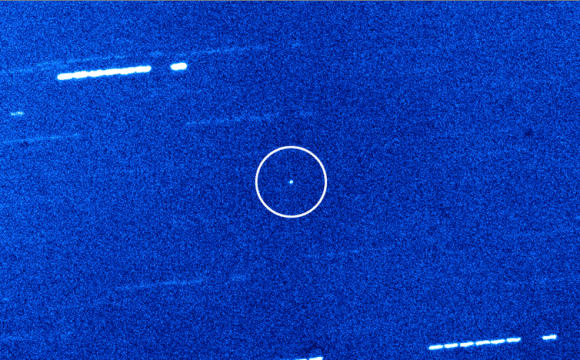
As they indicate in their study, the team relied on information from the ESO’s Very Large Telescope in Chile and the William Herschel Telescope in La Palma. Using these instruments, they were able to obtain spectra from sunlight reflected off of ‘Oumuamua within 48 hours of the discovery. This revealed vital information about the composition of the object, and pointed towards it being icy rather than rocky. As Fitzsimmons explained in op-ed piece in The Conversation:
“Our data revealed its surface was red in visible light but appeared more neutral or grey in infra-red light. Previous laboratory experiments have shown this is the kind of reading you’d expect from a surface made of comet ices and dust that had been exposed to interstellar space for millions or billions of years. High-energy particles called cosmic rays dry out the surface by removing the ices. These particles also drive chemical reactions in the remaining material to form a crust of chemically organic (carbon-based) compounds.”
These findings not only addressed a long-standing question about ‘Oumuamua true nature, it also addresses the mystery of why the object did not experience outgassing as it neared our Sun. Typically, comets experience sublimation as they get closer to a star, which results in the formation of a gaseous envelope (aka. “halo”). The presence of an outer layer of carbon-rich material would explain why this didn’t happen ‘Oumuamua.
They further conclude that the red layer of material could be the result of its interstellar journey. As Fitzsommons explained, “another study using the Gemini North telescope in Hawaii showed its color is similar to some ‘trans-Neptunian objects’ orbiting in the outskirts of our solar system, whose surfaces may have been similarly transformed.” This red coloring is due to the presence of tholins, which form when organic molecules like methane are exposed to ultra-violet radiation.
Similarly, another enduring mystery about this object was resolved thanks to the recent efforts of Breakthrough Listen. As part of Breakthrough Initiatives’ attempts to explore the Universe and search for signs of Extra-Terrestrial Intelligence (ETI), this project recently conducted a survey of ‘Oumuamua to determine if there were any signs of radio communications coming from it.
While previous studies had all indicated that the object was natural in origin, this survey was more about validating the sophisticated instruments that Listen relies upon. The observation campaign began on Wednesday, December 13th, at 3:00 pm EST (12:00 PST) using the Robert C. Byrd Greenbank Radio Telescope, the world’s premiere single-dish radio telescope located in West Virginia.
The observations period was divided into four “epochs” (based on the object’s rotational period), the first of which ran from 3:45 pm to 9:45 pm ET (12:45 pm to 6:45 pm PST) on Dec 13th, and last for ten hours. During this time, the observation team monitored ‘Oumuamua across four radio bands, ranging from the 1 to 12 GHz bands. In addition to calibrating the instrument, the survey accumulated 90 terabytes of raw data over after observing ‘Oumuamua itself for two hours.
The initial results and data were released last week (Dec. 13th) and are available through the Breakthrough Listen archive. As Andrew Siemion – the Director of Berkeley SETI Research Center who took part in the survey – indicated in a Breakthrough Initiatives press release:
“It is great to see data pouring in from observations of this novel and interesting source. Our team is excited to see what additional observations and analyses will reveal”.
So far, no signals have been detected, but the analysis is far from complete. This is being conducted by Listen’s “turboSETI” pipeline, which combs the data for narrow bandwidth signals that are drifting in frequency. This consists of filtering out interference signals from human sources, then matching the rate at which signals drift relative to the expected drift caused by ‘Oumuamua’s own motion.
In so doing, the software attempts to identify any signals that might be coming from ‘Oumuamua itself. So far, data from the S-band receiver (frequencies ranging from 1.7 to 2.6 GHz) has been processed, and analysis of the remaining three bands – which corresponds to receivers L, X, and C is ongoing. But at the moment, the results seem to indicate that ‘Oumuamua is indeed a natural object – and an interstellar comet to boot.
This is certainly bad news for those who were hoping that ‘Oumuamua might be a massive cylinder-shaped generation ship or some alien space probe sent to communicate with the whales! I guess first contact – and hence, proof we are NOT alone in the Universe – is something we’ll have to wait a little longer for.
Further Reading: The Conversation, Nature, Breakthrough Initiatives
Weekly Space Hangout – Dec 13, 2017: Emilio Enriquez and SETI’s Breakthrough Listen Initiative
Hosts:
Fraser Cain (universetoday.com / @fcain)
Dr. Paul M. Sutter (pmsutter.com / @PaulMattSutter)
Dr. Kimberly Cartier (KimberlyCartier.org / @AstroKimCartier )
Dr. Morgan Rehnberg (MorganRehnberg.com / @MorganRehnberg ChartYourWorld.org)
Special Guests:
Dr. Emilio Enriquez is a Post Doc at the Berkeley SETI Research Center and a member of the Breakthrough Listen Initiative (http://seti.berkeley.edu/listen/). Emilio is the lead author of two recent SETI Research Center publications about Ross 128 b, the nearby exoplanet that researchers feel may have conditions that are conducive to life.
His expertise is in modelling of physical processes in galaxies, such as gas accretion onto galaxies, star formation, stellar feedback, gas accretion onto black holes, among other similar mechanisms. He also works with large multi-wavelength surveys of galaxies to study the connection between galaxies and their central super-massive black holes.
Announcements:
If you would like to join the Weekly Space Hangout Crew, visit their site here and sign up. They’re a great team who can help you join our online discussions!
We record the Weekly Space Hangout every Wednesday at 5:00 pm Pacific / 8:00 pm Eastern. You can watch us live on Universe Today, or the Weekly Space Hangout YouTube page – Please subscribe!
Breakthrough Listen is Going to Scan ‘Oumuamua, You Know, Just to be Sure it’s Just an Asteroid and Not a Spaceship.

On October 19th, 2017, the Panoramic Survey Telescope and Rapid Response System-1 (Pan-STARRS-1) in Hawaii announced the first-ever detection of an interstellar asteroid, named 1I/2017 U1 (aka. ‘Oumuamua). Based on subsequent measurements of its shape (highly elongated and thin), there was some speculation that it might actually be an interstellar spacecraft (the name “Rama” ring a bell?).
For this reason, there are those who would like to study this object before it heads back out into interstellar space. While groups like Project Lyra propose sending a mission to rendezvous with it, Breakthrough Initiatives (BI) also announced its plans to study the object using Breakthrough Listen. As part of its mission to search for extra-terrestrial communications, this project will use the Greenbank Radio Telescope to listen to ‘Oumuamua for signs of radio transmissions.
Observations of ‘Oumuamua’s orbit revealed that it made its closest pass to our Sun back in September of 2017, and has been on its way back to interstellar space ever since. When it was observed back in October, it was passing Earth at a distance of about 85 times the distance between Earth and the Moon, and was traveling at a peak velocity of about 315,430 km/h (196,000 mph).
This indicated that, unlike the many Near-Earth Objects (NEOs) that periodically cross Earth’s orbit, this asteroid was not gravitationally bound to the Sun. In November, astronomers using the ESO’s Very Large Telescope (VLT) at the Paranal Observatory in Chile were also able to determine the brightness and color of the asteroid, which allowed for precise calculations of its size and shape.
Basically, they determined that it was 400 meters (1312 ft) long and very narrow, indicating that it was shaped somewhat like a cigar. What’s more, the idea of a cigar or needle-shaped spacecraft is a time-honored concept when it comes to science fiction and space exploration. Such a ship would minimize friction and damage from interstellar gas and dust, and could rotate to provide artificial gravity.
For all of these reasons, it is understandable why some responded to news of this asteroid by making comparisons to a certain science fiction novel. That would be Arthur C. Clarke’s Rendezvous with Rama, a story of a cylindrical space ship that travels through the Solar System while on its way to another star. While a natural origin is the more likely scenario, there is no consensus on what the origin this object might be – other than the theory that it came from the direction of Vega.
Hence why Breakthrough Listen intends to explore ‘Oumuamua to determine whether it is truly an asteroid or an artifact. Established in January of 2016, Listen is the largest scientific research program aimed at finding evidence of extra-terrestrial intelligence with established SETI methods. These include using radio observatories to survey 1,000,000 of the closest stars (and 100 of the closest galaxies) to Earth over the course of ten years.

Listen’s observation campaign will begin on Wednesday, December 13th, at 3:00 pm EST (12:00 PST), using the Greenbank Radio Telescope. This 100-meter telescope is the world’s premiere single-dish radio telescope and is capable of operating at millimeter and submillimeter wavelengths. It is also the mainstay of the NSF-funded Green Bank Observatory, located in West Virginia.
The first phase of observations will last a total of 10 hours, ranging from the 1 to 12 GHz bands, and will broken down into four “epochs” (based on the object’s rotational period). At present, ‘Oumuamua is about 2 astronomical units (AUs) – or 299,200,000 km; 185,900,000 mi – away from Earth, putting it at twice the distance between the Earth and the Sun. This places it well beyond the orbit of Mars, and over halfway between Mars and Jupiter.
At this distance, the Green Bank Telescope will take less than a minute to detect an omni-directional transmitter with the power of a cellphone. In other words, if there is a alien signal coming from this object, Breakthrough Listen is sure to sniff it out in no time! As Andrew Siemion, Director of Berkeley SETI Research Center and a member of Breakthrough Listen, explained in a BI press statement:
“‘Oumuamua’s presence within our solar system affords Breakthrough Listen an opportunity to reach unprecedented sensitivities to possible artificial transmitters and demonstrate our ability to track nearby, fast-moving objects. Whether this object turns out to be artificial or natural, it’s a great target for Listen.”
Even if there are no signals to be heard, and no other evidence of extra-terrestrial intelligence is detected, the observations themselves are a opportunity for scientists and the field of radio astronomy in general. The project will observe ‘Oumuamua in portions of the radio spectrum that it has not yet been observed at, and is expected to yield information about the possibility of water ice or the presence of a “coma” (i.e. gaseous envelop) around the object.
During the previous survey, data gathered using the VLT’s FOcal Reducer and low dispersion Spectrograph (FORS) indicated that ‘Oumuamua was likely a dense and rocky asteroid with a high metal content and little in the way of water ice. Updated information provided by the Greenbank Telescope could therefore confirm or cast doubt on this, thus reopening the possibility that it is actually a comet.
Regardless of what it finds, this survey is likely to be a feather in the cap of Breakthrough Listen, which already demonstrated it’s worth in terms of non-SETI astronomy this past summer. At that time, and using the Green Bank Radio Telescope, the Listen science team at UC Berkeley observed 15 Fast Radio Bursts (FRBs) for the fist time coming from a dwarf galaxy three billion light-years from Earth.
Still, I think we can all agree that an extra-terrestrial spaceship would be the most exciting possibility (and perhaps the most frightening!). And it is very safe to say that some of us will be awaiting the results of the survey with baited breath. Luckily, we’ll only have to wait two more days to see if humanity is still alone in the Universe or not! Stay tuned!
Further Reading: Breakthrough Initiatives
Breakthrough Detects Repeating Fast Radio Bursts Coming from Distant Galaxy
In July of 2015, Russian billionaire Yuri Milner announced the creation of Breakthrough Listen, a decade-long project that would conduct the largest survey to date for signs of extra-terrestrial communications (ETI). As part of his non-profit organization, Breakthrough Initiatives, this survey would rely on the latest in instrumentation and software to observe the 1,000,000 closest stars and 100 closest galaxies.
Using the Green Bank Radio Telescope in West Virginia, the Listen science team at UC Berkeley has been observing distant stars for over a year now. And less than a week ago, they observed 15 Fast Radio Bursts (FRBs) coming from a dwarf galaxy located three billion light-years away. According to a study that described their findings, this was the first time that repeating FRBs have been seen coming from this source at these frequencies.
The team’s study, titled “FRB 121102: Detection at 4 – 8 GHz band with Breakthrough Listen backend at Green Bank“, was recently published in The Astronomers Telegraph. Led by Dr. Vishal Gajjar – a postdoctoral researcher at the University of California, Berkeley – the team conducted a detailed survey of FRB 121102. This repeating FRB source is located in a dwarf galaxy in Auriga constellation, some 3 billion light-years from Earth.
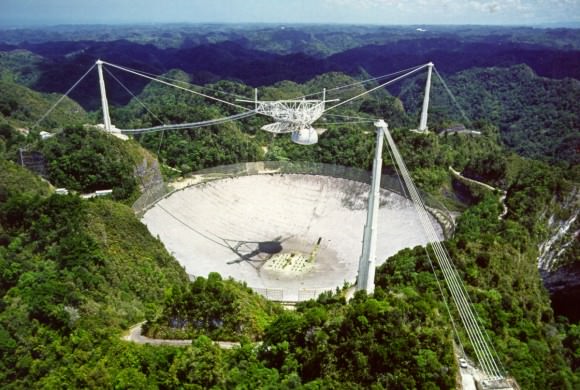
To clarify, FRBs are brief, bright pulses of radio waves that are periodically detected coming from distant galaxies. This strange astronomical phenomena was first detected in 2007 by Duncan Lorimer and David Narkovic using the Parkes Telescope in Australia. To honor their discovery, FRBs are sometimes referred to as “Lorimer Bursts”. Many FRB sources have been confirmed since then, some of which were found repeating.
The source known as FRB 121101 was discovered back on November 2nd, 2012, by astronomers using the Arecibo radio telescope. At the time, it was the first FRB to be discovered; and by 2015, it became the first FRB to be seen repeating. This effectively ruled out the possibility that repeating FRBs were caused by catastrophic events, which had previously been theorized.
And in 2016, FRB 121102 was the first FRB to have its location pinpointed to such a degree that its host galaxy could be identified. As such, the Listen science team at UC Berkeley was sure to add FRB 121102 to their list of targets. And in the early hours of Saturday, August 26th, Dr. Vishal Gajjar – a postdoctoral researcher at UC Berkeley – observed FRB 121102 using the Green Bank Radio Telescope (GBRT) in West Virginia.
Using the Digital Backend instrument on the GBRT, Dr. Gajjar and the Listen team observed FRB 121102 for five hours. From this, they accumulating 400 terabytes of data in the entire 4 to 8 GHz frequency band which they then analyzed for signs of short pulses over a broad range of frequencies. What they found was evidence of 15 new pulses coming from FRB 121102, which confirmed that it was in a newly active state.
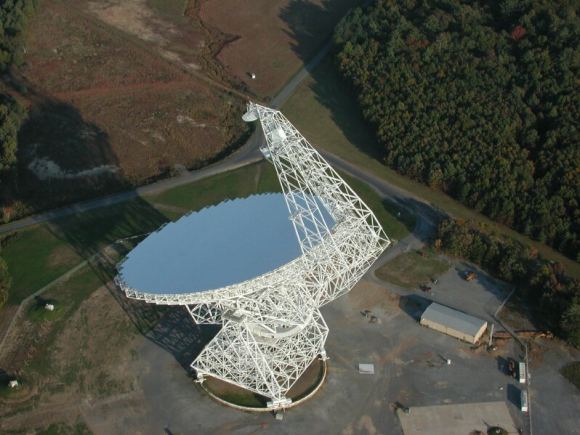
In addition, their observations revealed that the brightest of these 15 emissions occurred at around 7 GHz. This was higher than any repeating FRBs seen to date, which indicated for the first time that they can occur at frequencies higher than previously thought. Last, but not least, the high-resolution data the Listen team collected is expected to yield valuable insights into FRBs for years to come.
This was made possible thanks to the Digital Backend instrument on the GBRT, which is able to record several GHz of bandwidth simultaneously and split the information into billions of individuals channels. This enables scientists to study the proprieties and the frequency spectrum of FRBs with greater precision, and should lead to new theories about the causes of these radio emissions.
So even if these particular signals should prove to not be an indication of extra-terrestrial intelligence, Listen is still pushing the boundaries of what is possible with radio astronomy. And given that Breakthrough Listen is less than two years into its proposed ten-year survey, we can expect many more sources to be observed and studied in the coming years. If there’s evidence of ETI to be found, we’re sure to find out about it sooner or later!
And be sure to check out this video of the Green Bank Telescope and the surveys it allows for, courtesy of Berkeley SETI:
Further Reading: Breakthrough Initiatives
Breakthrough Listen Publishes First Analysis Of 692 Stars In ET Search

In July of 2015, Breakthrough Initiatives – a non-profit dedicated to the search for extra-terrestrial intelligence, founded by Yuri Milner – announced the creation of Breakthrough Listen. A ten-year initiative costing $100 million, this program was aimed at using the latest in instrumentation and software to conduct the largest survey to date for extraterrestrial communications, encompassing the 1,000,000 closest stars and 100 closest galaxies.
On Thursday, April. 20th, at the Breakthrough Discuss conference, the organization shared their analysis of the first year of Listen data. Gathered by the Green Bank Radio Telescope, this data included an analysis of 692 stars, as well as 11 events that have been ranked for having the highest significance. The results have been published on the project’s website, and will soon be published in the Astrophysical Journal.
Since 2016, Breakthrough Listen has been gathering data with the Green Bank Radio Telescope in West Virginia, the Lick Observatory’s Automated Planet Finder on Mt. Hamilton in California, and the Parkes Radio Telescope in Australia. This data is analyzed by the Listen science team at the Berkeley SETI Research Center (BSRC), who rely on a specially-designed data pipeline to scan through billions of radio channels for any sign of unique signals.
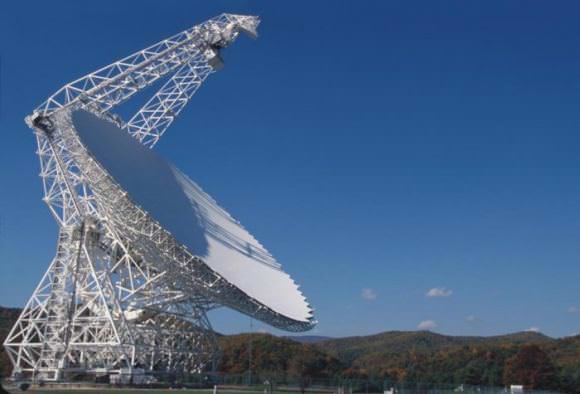
While the results were not exactly definitive, this is just the first step in a program that will span a decade. As Dr. Andrew Siemion, the Director of the BSRC, explained in a BI press release:
“With the submission of this paper, the first scientific results from Breakthrough Listen are now available for the world to review. Although the search has not yet detected a convincing signal from extraterrestrial intelligence, these are early days. The work that has been completed so far provides a launch pad for deeper and more comprehensive analysis to come.”
The Green Bank Telescope searched for these signals using its “L-band” receiver, which gathers data in frequencies ranging from 1.1 to 1.9 GHz. At these frequencies, artificial signals can be distinguished from natural sources, which includes pulsars, quasars, radio galaxies and even the Cosmic Microwave Background (CMB). Within these parameters, the BSRC team examined 692 stars from its primary target list.
For each star, they conducting three five-minutes observation periods, while also conducting five-minute observations on a set of secondary targets. Combined with a Doppler drift search – a perceived difference in frequency caused by the motion of the source or receiver (i.e. the star and/or Earth) – the Listen science team identified channels where radio emission were seen for each target (aka. “hits”).
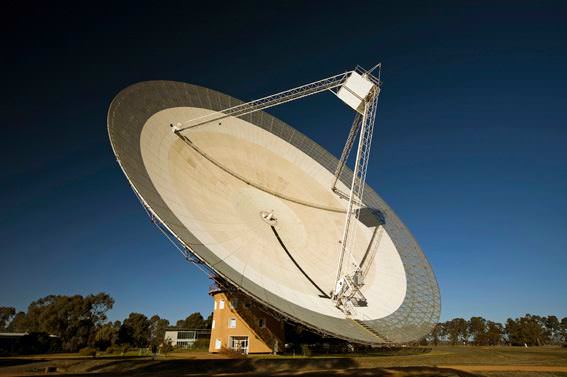
This led to a combined 400 hours and 8 petabytes worth of observational data. All together, the team found millions of hits from the sample data as a whole, and eleven events that rose above the threshold for significance. These events (which are listed here) took place around eleven distant stars and ranged from to 25.4 to 3376.9 SNR (Signal-to-Noise Ratio).
However, the vast majority of the overall hits were determined to be the result of radio frequency interference from local sources. What’s more, further analysis of the 11 events indicated that it was unlikely that any of the signals were artificial in nature. While these stars all exhibited their own unique radio “fingerprints”, this is not necessarily an indication that they are being broadcast by intelligent species.
But of course, finding localized and unusual radio signals is an excellent way to select targets for follow-up examination. And if there is evidence to be found out there of intelligent species using radio signals to communicate, Breakthrough Listen is likely to be the one that finds them. Of all the SETI programs mounted to date, Listen is by far the most sophisticated.
Not only do its radio surveys cover 10 times more sky than previous programs, but its instruments are 50 times more sensitive than telescopes that are currently engaged in the search for extra-terrestrial life. They also cover 5 times more of the radio spectrum, and at speeds that are 100 times as fast. Between now and when it concludes in the coming decade, the BSRC team plans to release updated Listen data once every six months.
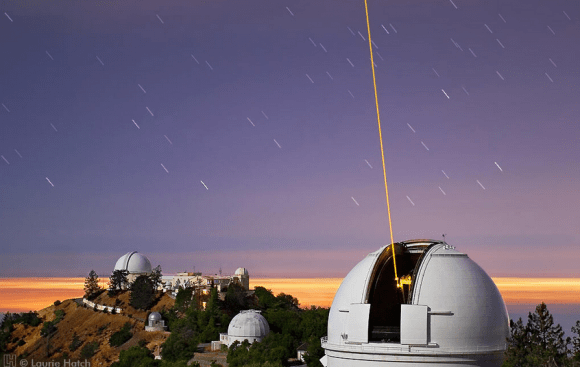
In the meantime, they are actively engaging with signal processing and machine learning experts to develop more sophisticated algorithms to analyze the data they collect. And while they continue to listen for extra-solar sources of life, Breakthrough Starshot continues to develop the first concept for a laser-driven lightsail, which they hope will make the first interstellar voyage in the coming years.
And of course, we here in the Solar System are looking forward to missions in the coming decade that will search for life right here, in our own backyard. These include missions to Europa, Enceladus, Titan, and other “ocean worlds” where life is believed to exist in some exotic form!
Breakthrough Listen‘s data analysis can be found here. Director Andrew Siemion also took to Facebook Live on Thursday, April 20th, to presents the results of Listen’s first year of study.And be sure to check out this video that marked the launch of Breakthrough Initiatives:
Further Reading: Breakthrough Initiatives, Berkeley SETI
The Search Is On For Alien Signals Around Tabby’s Star
There’s a remote chance that inexplicable light variations in a star in the Northern Cross may be caused by the works of an alien civilization.
1,480 light years from Earth twinkles one of the greatest mysteries of recent times. There in the constellation Cygnus the Swan, you’ll find a dim, ordinary-looking point of light with an innocent sounding name — Tabby’s Star. Named for Louisiana State University astronomer Tabetha Boyajian, who was the lead author on a paper about its behavior, this star has so confounded astronomers with its unpredictable ups and downs in its brightness, they’ve gone to war on the object, drilling down on it with everything from the Hubble to the monster 393.7-inch (10-meter) Keck Telescope in Hawaii. Continue reading “The Search Is On For Alien Signals Around Tabby’s Star”


